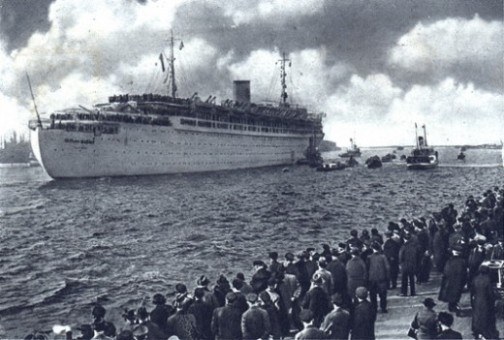The Sinking of the Wilhelm Gustloff: The World’s Deadliest Maritime Disaster
When people hear the phrase “maritime disaster,” their minds often turn to the Titanic, the ill-fated liner that sank in 1912. Yet, what many do not know is that the Titanic’s death toll of 1,500 pales in comparison to a much darker, lesser-known tragedy of the Second World War—the sinking of the German liner MV Wilhelm Gustloff. On the bitterly cold night of January 30, 1945, the Wilhelm Gustloff was struck by Soviet torpedoes in the Baltic Sea, killing nearly 9,000 people. To this day, it remains the deadliest maritime disaster in human history.


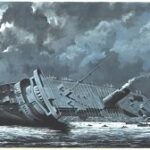

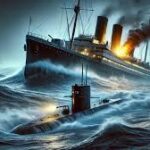
The Ship That Became a Symbol
The Wilhelm Gustloff was not initially built for war. Launched in 1937, it was a cruise liner of the Nazi leisure organization “Strength Through Joy” (Kraft durch Freude), created to offer affordable cruises to German workers as part of Adolf Hitler’s propaganda campaign. Named after Wilhelm Gustloff, a Nazi leader assassinated in Switzerland, the ship symbolized Nazi pride and prosperity in pre-war Germany.
With the outbreak of World War II in 1939, the Wilhelm Gustloff was quickly repurposed. First, it served as a hospital ship, then later as a floating barracks for the German Navy. By 1945, as the tide of war turned decisively against Germany, it was pressed into one final role—as an evacuation vessel.
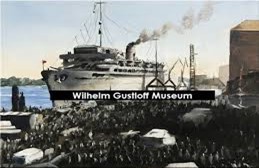 |
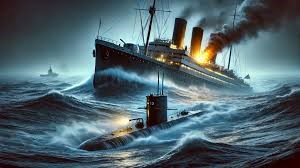 |
|---|
Operation Hannibal: The Largest Naval Evacuation
In January 1945, the Red Army launched a massive offensive into East Prussia, unleashing fear and chaos among German civilians. Tales of Soviet vengeance—real and exaggerated—spread quickly. Millions of civilians, soldiers, and officials scrambled to flee westward in what became known as Operation Hannibal, one of the largest sea evacuations in history.
The Wilhelm Gustloff, now painted in military gray, was among the many ships tasked with this desperate mission. Its assignment was to evacuate wounded soldiers, naval personnel, and civilians from the port of Gotenhafen (now Gdynia, Poland) across the Baltic Sea to safer territory in western Germany.
Overcrowded Vessel
The ship was designed to carry 1,900 passengers, but on that freezing January night, it became a floating ark of desperation. Refugees—mostly women, children, and the elderly—crammed into every available space. Soldiers and naval cadets squeezed onto decks. Reports suggest the ship carried over 10,000 people, far beyond capacity.
Conditions were dire. People huddled in the cold, many without food or blankets. The air was thick with fear, exhaustion, and the heavy knowledge that this voyage was their last hope of escape.
The Fatal Voyage
On January 30, 1945, at around noon, the Wilhelm Gustloff departed Gotenhafen under gray skies and sub-zero temperatures. It was escorted by a single torpedo boat, the Löwe, but protection was minimal against Soviet submarines lurking beneath the icy waters.
Captain Friedrich Petersen faced a fateful decision. As night fell, he chose to activate the ship’s navigation lights to avoid collision with friendly German vessels in the crowded waters. But that same decision also made the Wilhelm Gustloff a visible target for enemy submarines.
The Soviet Hunter
Lying in wait was the Soviet submarine S-13, commanded by Captain Alexander Marinesko. For Marinesko, a man of troubled reputation within the Soviet Navy, this was an opportunity to prove his worth. Spotting the illuminated Wilhelm Gustloff, he maneuvered his submarine into position.
At 9:16 p.m., Marinesko ordered the launch of three torpedoes. All three struck their target.
Chaos and Catastrophe
The first torpedo hit near the bow, flooding crew quarters. The second struck the middle of the ship, shattering water-tight compartments. The third tore into the engine room, knocking out power and causing the ship to list sharply. Panic erupted instantly.
Refugees screamed and surged toward lifeboats, but many were frozen to their davits or already occupied. In the darkness, families were torn apart. Soldiers tried to maintain order, but chaos ruled. Women clutched their children, some choosing to jump into the icy sea rather than face certain death onboard.
Within 40 minutes, the Wilhelm Gustloff slipped beneath the waves of the Baltic, disappearing into the night.
The Human Toll
Of the estimated 10,000 passengers, only about 1,200 survived. Rescue ships, including the torpedo boat Löwe and a few German minesweepers, managed to pull survivors from the freezing waters. Many of those who escaped the sinking ship died soon after from hypothermia in the minus-18°C (0°F) Baltic.
The victims included thousands of women and children, wounded soldiers, and young naval cadets. The tragedy eclipsed all other maritime disasters in sheer scale, yet it would remain a forgotten chapter of history for decades.
A Forgotten Tragedy
Why is the Wilhelm Gustloff disaster not as well-known as the Titanic? The answer lies in the context of history.
At the end of World War II, the world’s attention was focused on Nazi atrocities, the Holocaust, and the devastation left by the conflict. The suffering of German civilians was often overshadowed by the crimes of the Nazi regime. For decades, the Wilhelm Gustloff was barely mentioned in history books, treated almost as a footnote in the vast narrative of war.
Only in recent decades have historians revisited the disaster, acknowledging it not as a tale of Nazi victimhood but as a human tragedy of immense proportions. Writers such as Günter Grass, in his novel Crabwalk, helped bring the story back into public consciousness.
The Legacy of the Wilhelm Gustloff
Today, the wreck of the Wilhelm Gustloff lies in the Baltic Sea, declared a war grave. Diving expeditions have confirmed the scale of destruction, but the site remains largely undisturbed out of respect for the thousands entombed within.
The disaster raises haunting questions: Was the ship a legitimate military target, given it carried soldiers alongside civilians? Did the Soviet submarine commander act out of military duty or vengeance? And could the tragedy have been avoided if the ship had remained in darkness that night?
What is certain is that the sinking of the Wilhelm Gustloff symbolizes the immense human cost of war—innocent lives caught in the crossfire of clashing armies, their suffering often forgotten amidst the grand narratives of victory and defeat.
Comparisons to Other Disasters
- Titanic (1912): About 1,500 dead
- Lusitania (1915): About 1,200 dead
- Doña Paz (1987, Philippines): About 4,386 dead
- Wilhelm Gustloff (1945): Around 9,000 dead
No other single maritime disaster has claimed as many lives.
Conclusion
The sinking of the Wilhelm Gustloff remains the greatest maritime disaster in history, a tragedy that swallowed nearly 9,000 souls in less than an hour. Unlike the Titanic, it carried no wealthy aristocrats or famous passengers, only desperate refugees, wounded men, and children whose names were lost to history.
It is a stark reminder that in war, the greatest victims are often the voiceless—the civilians who bear the weight of conflict’s cruelty.
The cold waters of the Baltic Sea still guard their memory, a silent tomb for the thousands who never reached the shore.
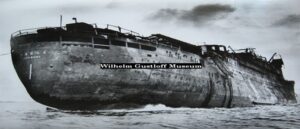 |
|---|
All pictures: Amitabh Tripathi

